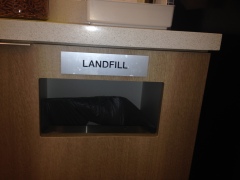Now more than ever acquiring possessions, and lots of them, is convenient and cheap. We are bombarded with advertisements, on average about 3000 per day, telling us we need to buy new furniture, clothes, electronics, appliances, personal care products, sports equipment, etc., which can be bought for incredibly low prices online or at megastores like Walmart, Costco or Marshalls, to name a few.
There are hidden costs though for purchasing things so cheaply. The accessibility of such affordable items makes accumulating “stuff” so easy that we often end up with things we don’t need, that have to be managed, and thrown away into the landfill. In order to keep prices down, manufacturers often employ underage workers overseas who are poorly paid and work in unsafe conditions. Quality is usually compromised and manufactured with planned obsolescence so that we are constantly replacing things, creating more waste for the landfill.
BuyMeOnce 
A reader referred me to a new website called buymeonce.com, which finds and promotes durable, reasonably priced, quality products which last. Started in January by a young British entrepreneur with a mission to “throw away our throw away culture”, BuyMeOnce doesn’t sell directly to the consumer, but rather provides links to the manufacturer or retail sites. BuyMeOnce encourages people to buy just a few great things, to take care of the things they have, and challenges manufacturers to make products that last.
While consumerism is good for the economy, it’s time to purchase more responsibly. Ask yourself some questions before you buy something. Where was the product manufactured and under what conditions? How will my purchase impact the environment? Do I really need the high impulse item at the checkout counter? Am I better off spending a little more for a quality item that lasts longer? The average person makes 4 ½ pounds of garbage a day and America creates 30% of the world’s waste. Make it a goal to lessen your waste with more thoughtful purchasing. Check out buymeonce.com.
For more green living tips, visit greenwithbetsy.com.














